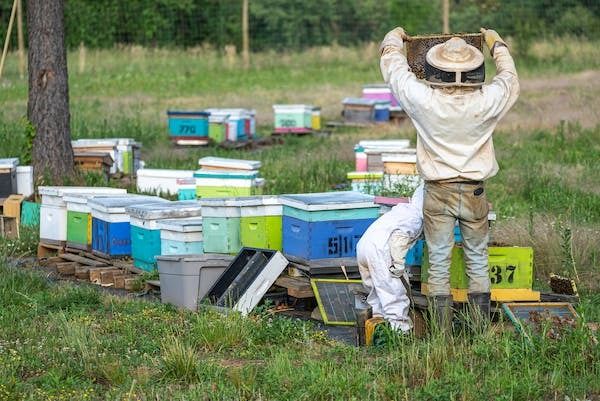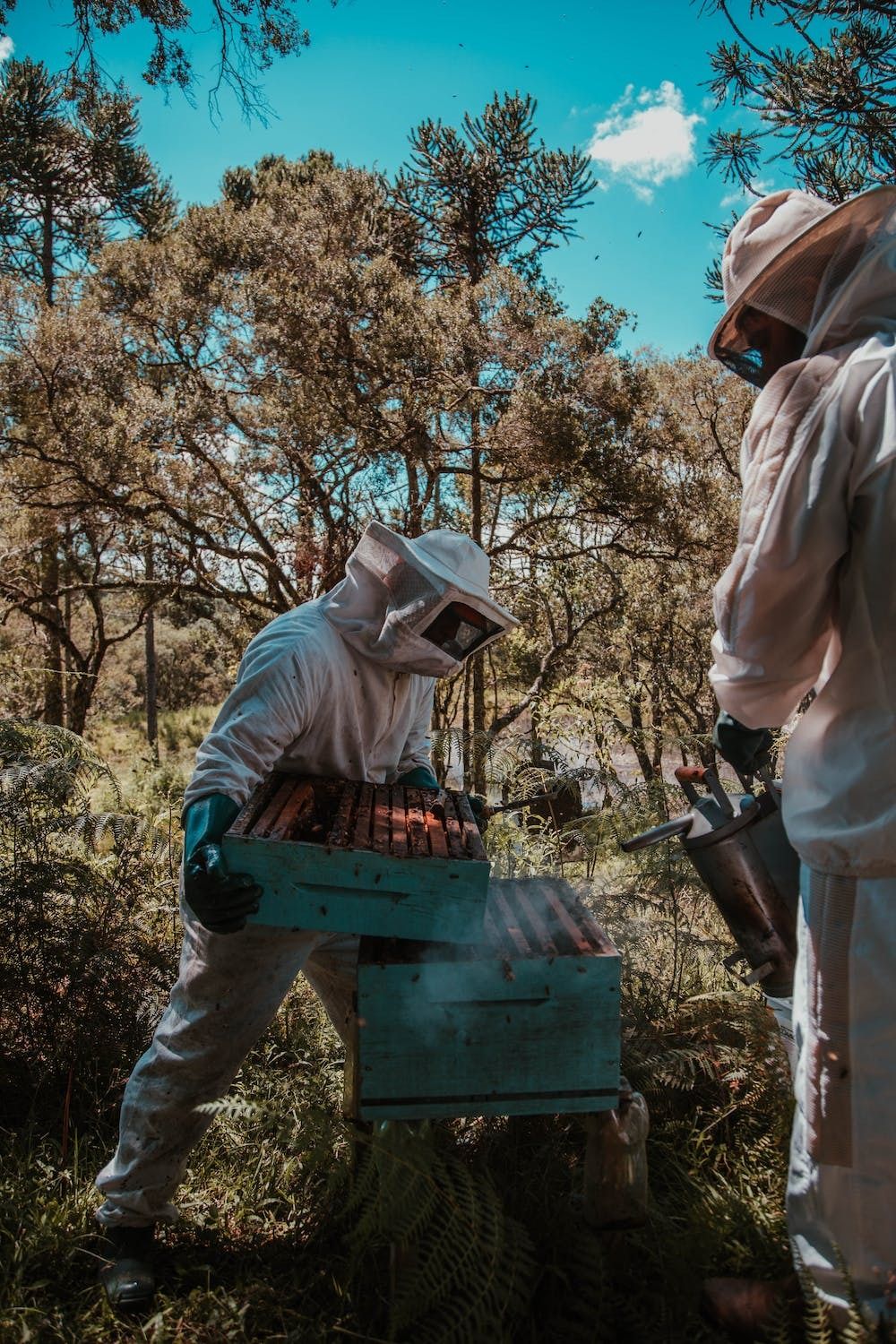
Beekeeping Safety Training: Secure Your Buzzing Hobby
Beekeeping is a rewarding and fascinating hobby that allows you to connect with nature and enjoy the sweet rewards of honey production. However, it's essential to remember that working with bees can be hazardous without the right knowledge and equipment. That's where beekeeping safety training comes into play. In this comprehensive guide, we'll explore the importance of beekeeping safety, the essential gear, available training programs, and much more.

Why Beekeeping Safety Matters
Beekeeping safety isn't just a formality; it's a crucial aspect of enjoying this hobby without putting yourself at risk. Bees, while incredibly important to our ecosystem, can sting and cause severe allergic reactions. Moreover, mishandling beehives or beekeeping equipment can lead to accidents. Here are some reasons why beekeeping safety should be your top priority:
Protect Yourself from Stings
Bee stings can range from mildly uncomfortable to life-threatening for those with allergies. Proper protective gear and training can significantly reduce your risk of getting stung.
Safeguard the Bees
Handling bees without the right knowledge can stress them or harm the hive. Beekeeper safety practices ensure the well-being of your bees.
Ensure Longevity in Beekeeping
By investing in safety training, you're more likely to enjoy beekeeping for years to come. Safety reduces the chances of accidents that might make you abandon your hobby prematurely.
Basics of Beekeeping Safety
Before diving into the world of beekeeping safety training, it's essential to understand the basics. Let's start with the protective gear and tools that will keep you safe during hive inspections and honey harvesting.
Protective Gear
1. Beekeeping Jackets
Beekeeping jackets are your first line of defense against bee stings. These specially designed suits cover your entire body and feature a veil to protect your face.
2. Veils and Headgear
Veils and headgear are essential components of your protective gear. They ensure that bees can't access your head, especially your face and eyes.
3. Gloves
Quality gloves are essential for protecting your hands from stings and ensuring a secure grip when working with bees.
Essential Tools
1. Smokers
Smokers are used to calm bees during hive inspections. They release a cool, soothing smoke that encourages bees to move away from the areas you need to access.
2. Hive Tools
Hive tools help you separate hive components and perform inspections without damaging the hive or injuring the bees.
3. Bee Brushes
Bee brushes are used to gently remove bees from frames, making it easier to inspect and harvest honey.
Now that you understand the basics let's explore how beekeeping safety training can help you master these tools and gear.
Beekeeping Safety Courses: Your Path to Expertise
Beekeeping safety courses are the most effective way to learn the ropes of this fascinating hobby while staying safe. These courses offer structured, hands-on training led by experienced beekeepers. Here's what you can expect from them:

Importance of Formal Training
Formal beekeeping safety training is essential because it provides a structured learning environment. You'll have access to experienced instructors who can guide you through every step of the process.
Overview of Available Beekeeping Safety Courses
There are various beekeeping safety courses available, ranging from beginner to advanced levels. Each course is designed to equip you with the knowledge and skills needed for safe beekeeping. Some popular ones include:
1. Beekeeping Safety 101
This introductory course covers the basics of beekeeping safety, including the proper use of protective gear, tools, and basic hive management.
2. Advanced Beekeeper Certification
For those looking to take their beekeeping skills to the next level, advanced certification programs offer in-depth training on hive maintenance, disease prevention, and honey production.
3. Beehive Management and Safety
This course delves into the finer points of hive management, ensuring that you can keep your bees healthy and thriving.
Selecting the Right Beekeeping Course
Choosing the right course is crucial to your beekeeping success. Consider factors like accreditation, course content, duration, and cost when making your decision. Accredited courses from recognized organizations are often a safe bet.
Online vs. In-Person Beekeeping Safety Training
When it comes to beekeeping safety training, you have two main options: online courses and in-person classes. Both have their advantages and drawbacks.
Online Courses
Online courses offer flexibility, allowing you to learn at your own pace. However, they may lack the hands-on experience that in-person classes provide.
In-Person Training
In-person beekeeping safety training provides practical, hands-on experience. It's a great choice for those who prefer a structured, interactive learning environment.
DIY Beekeeping Safety Training
While formal courses are highly recommended, you can also start your beekeeping safety journey independently. Here's how:
Self-Learning Resources
1. Books and Manuals
There are numerous beekeeping books and manuals available, providing valuable insights into safety practices and beekeeping techniques.
2. Online Forums and Communities
Joining online beekeeping communities can connect you with experienced beekeepers who can answer your questions and offer guidance.
Safety Precautions for Self-Learners
If you choose the self-learning path, make safety a top priority. Always wear protective gear, be cautious when approaching hives, and seek guidance from experienced beekeepers.
Frequently Asked Questions (FAQs)
Q1: What is the primary purpose of beekeeping jackets?
Beekeeping jackets are designed to protect beekeepers from stings during hive inspections and honey harvesting. They provide a barrier between the bees and your skin.
Q2: Can beginners learn beekeeping safety on their own?
While it's possible to self-learn beekeeping safety, formal training is highly recommended, especially for beginners. It ensures you have the knowledge and skills to handle bees safely.
Q3: How long does it take to complete a typical beekeeping safety course?
The duration of a beekeeping safety course varies. Basic courses can take a few days, while advanced certification programs may span several weeks or months.
Q4: What are the common mistakes to avoid in beekeeping safety?
Common mistakes include not wearing proper protective gear, mishandling beehives, and approaching hives too aggressively. These errors can lead to bee stings and hive disturbances.
Q5: Are there any age restrictions for beekeeping safety courses?
Age restrictions vary by course and location. Some courses may have age requirements, so it's essential to check with the training provider.
Beekeeping Safety Tips
Proper Use of Beekeeping Jackets
1. Putting on a Beekeeping Jacket
Ensure it's zipped up completely.
Tuck the jacket into your pants to seal any gaps.
Make sure the veil is securely attached and covers your face.
2. Maintaining and Cleaning Jackets
Regularly inspect for tears or damage.
Clean your jacket according to manufacturer guidelines.
Store it in a cool, dry place to prevent damage from insects or moisture.
Handling Bees Safely
1. Approaching the Hive
Approach the hive calmly and without sudden movements.
Use a smoker to calm the bees before opening the hive.
Stand to the side and slightly behind the hive entrance.
2. Inspecting the Hive
Work slowly and methodically.
Use your hive tool to gently separate frames.
Avoid squishing bees between frames.
3. Harvesting Honey
Smoke the bees away from honey frames.
Use a bee brush to gently remove the remaining bees.
Handle honey frames with care to avoid dripping honey.
Real-Life Beekeeping Safety Stories
Reading about the experiences of other beekeepers can provide valuable insights and inspiration for your journey. Here are some real-life stories:
A. Accounts of Beekeepers Who Attribute Their Safety to Proper Training
Learn from beekeepers who have successfully avoided accidents thanks to their training.
B. Personal Experiences of Overcoming Beekeeping Accidents
Read about beekeepers who faced challenges and how they overcame them, emphasizing the importance of safety.
The Future of Beekeeping Safety
As technology advances, so does beekeeping safety. Here's a glimpse into what the future holds:
Emerging Technologies for Safer Beekeeping
Discover how innovations like smart hives and monitoring devices are changing the game for beekeepers.
Research and Innovations in Beekeeping Safety Equipment
Stay up to date with the latest developments in beekeeping safety gear, from improved suits to innovative protective materials.
Conclusion
Beekeeping is a delightful hobby, but it comes with its risks. Prioritizing safety through proper training, the right gear, and responsible beekeeping practices is essential. Whether you choose formal courses or self-learning, always remember that beekeeping safety is a journey, and every step you take should protect both you and your buzzing companions.
Appreciate the creator